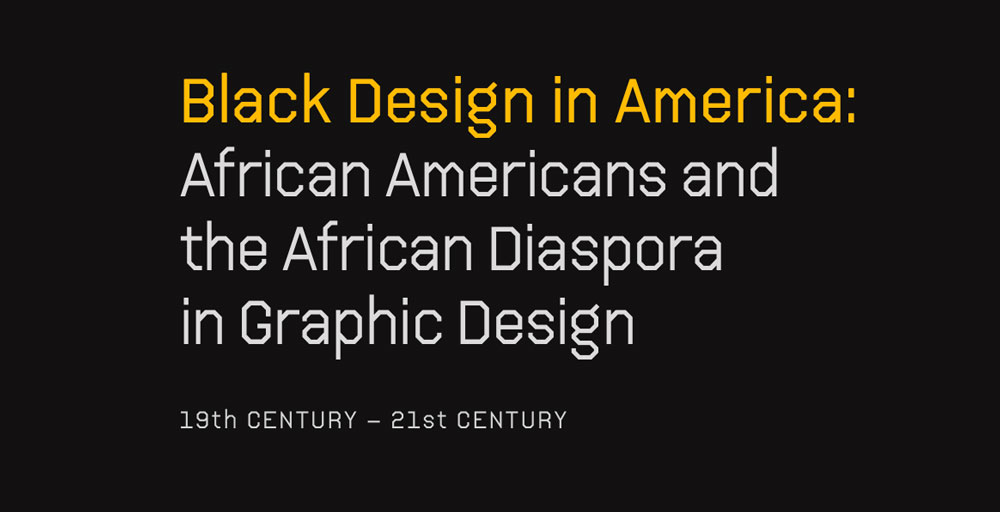
31 Jan Black Design in America: Educational Program Series
During January and into the first week of February, the design studio, Polymode, has facilitated a BIPOC design history course. “Black Design in America: African Americans and the African Diaspora in Graphic Design” is the first in a series of BIPOC and QTPOC-centered educational programs. The coursework spans the Black experience in the United States through a designer’s lens, from the transatlantic slave trade through the civil rights era and the emergence of hip hop to envisioning the future of Black design aesthetics. The topics challenge stereotypes, cast light on sensitive issues, and present little-known contributions by Black designers (such as W.E.B. Du Bois’ progressive data visualization).
The presentations feature live and pre-recorded lectures and readings from designers, educators, and thought-leaders. While many of the courses have already taken place, each recording and can be purchased for viewing at leisure. Each course’s price is reasonable, with tiered pricing for BIPOC, professionals, educators, and students. For students, the coursework is a steal at the cost of $6 or $3 for BIPOC students, making this valuable perspective on design accessible.
- Afrikan Alphabets & African Diasporic Design Lineage, presented by Saki Mafundikwa
Zimbabwe graphic designer and educator Saki Mafundikwa explores the multicultural lineages of African design that traveled to the Americas through the transatlantic slave trade. - Systems of Slavery and White Supremacy, presented by Ziddi Msangi with Silas Munro
Slavery systems powered the development of industry and markets, which drove global commerce, as evinced through the production of Kanaga cloth, which was designed and printed by East African artisans on fabric woven from cotton picked by slaves in the United States. - Designing Emancipation presented by Pierre Bowins
The abolitionist movement in Boston and New York led to the creation of broadsides and newspapers, such as Freedom’s Journal and North Star, which countered the mainstream media’s racist rhetoric. - Blackface and Minstrely Tradition presented by Kelly Walters
After the Civil War, the prevalence of derogatory stereotypes in minstrel shows and published music influenced white supremacy in popular culture. - Black Data: W.E.B. Du Bois and Data Visualization presented by Jason Forrest with Silas Munro
In 1900, W.E.B. Du Bois pioneered data visualization in a striking set of diagrams that illustrated data gathered from a sociological study on Black Americans. - Black Queer Stories in Print: 19th Century to the Harlem Renaissance presented by
Jon Key with Silas Munro
From an article in The Sun in the 1830s, through an issue of Survey Graphic reporting on what became known as The Harlem Renaissance, stories of Black gay and trans life have been chronicled. - The Great Migration: Harlem Artists Guild, and the 306 Group presented by Tasheka Arceneaux-Sutton
The exodus of Black Americans escaping Jim Crow laws resulted in a generation of leading artists and designers thriving in northern cities. - Strikethrough: Typography Messages of Protest for Civil Rights presented by Colette Gaiter
The civil rights movement of the 1960s and 1970s produced striking typography in publications and placards messages on posters and broadsides. - Iterative Identity: Art Deco, World’s Fair, and American Limits on Humanity presented by Omari Souza
In the mid-1900s, Black Americans were disenfranchised by threats and discrimination, which impacted where they could live and safely travel in the early years of the automobile age. - Black Revolutions: Organizing the Production of Black Design presented by Chris Dingwall
The contrasts and connections between Johnson Publishing, publishers of Ebony Magazine, and the AfriCOBRA artists’ collective serve as models for Black design production. - Funk, Blaxploitation, & Hip Hop Aesthetics presented by Tasheka Arceneaux-Sutton, and Pierre Bowins with Silas Munro
Black music and Black design intermixed in funk and hip hop culture, exemplified by flyer design, and influenced design globally. - Behind and Ahead of the Times: Histories and Futures of Black Futurity presented by Lauren Williams
This talk addresses emergent strategies in Black design by examining how Black designers have engaged in future building and their implications for the future of Black design. - Radical Design Pedagogy: Towards an Autochthonic Black Aesthetic for Graphic Design Pedagogy presented by Audrey Bennet
Bennet’s study of the ethnomathematics of African design shows that educators can shift the underlying grid of design education, as educators and designers draw inspiration from African aesthetics.
